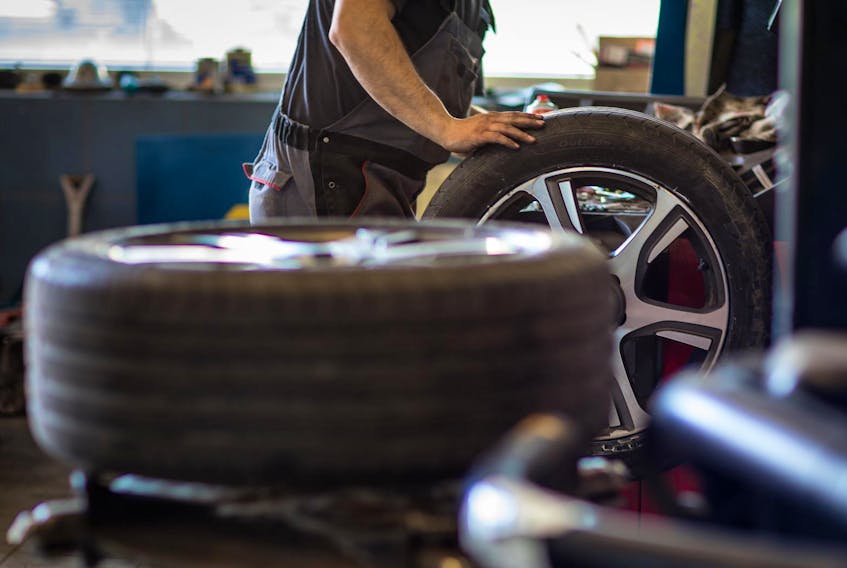With the increased service intervals and better reliability of newer vehicles, it is easy to forget that our vehicles still need regular maintenance.
Perhaps we don’t need a tuneup every spring and fall anymore, but getting a wheel alignment done on your vehicle should be part of your annual maintenance schedule.
Rather than thinking of it as an expense, think of it as cheap insurance, as it can save you money in the long run.
Before doing an alignment, a technician will inspect the vehicle’s suspension for damage. If something is wrong, there is no sense in performing an alignment until after it is corrected. Damage can come from hitting a curb, pothole or bouncing over rutted lanes. A vehicle suspension is tough, but if it takes an impact in certain directions, it is fairly easy to bend parts slightly. If there is no visual indication of damage, the technician then inspects all the moving parts for wear.
The technician inspects ball joints, steering joints, springs, suspension rubber bushings, shocks and tires. Some of these such as suspension bushings are inspected visually, but other items such as ball joints have maximum wear specifications in the repair manuals.
If they are not worn beyond specifications, they don’t need replacing. Even springs have specifications. In this situation, the technician measures the ride height of the vehicle to see if the springs are supporting properly. If the ride height is too low, the springs have sagged and should be replaced.
Also be sure to remove any heavy loads from the trunk such as sand bags or this will affect the vehicle ride height.
Tires do not need to be replaced to have a wheel alignment done, but if they are badly worn or worn in an unusual pattern, the technician will usually recommend replacement. A wheel alignment won’t even out the wear on badly worn tires, but it will keep new tires from wearing faster than they should. Tire pressures are also adjusted during the alignment so the vehicle is sitting properly on the alignment machine.
With the vehicle inspected, the technician will connect the alignment equipment and take the readings. Four-wheel alignments are the most common type performed. Two-wheel alignments (front only) were the norm in the past but front wheel drive vehicles and those with independent rear suspensions should have all four wheels aligned.
This is not as critical on rear wheel drive vehicles with a solid rear axle, such as pickups, but a four-wheel alignment can highlight problems such as bent rear axle housings or a axle housing shifted out of position.
The technician takes several readings. Camber is the tilt of the tire in or out at the top. Theoretically the tire should be exactly vertical to keep the tread on the ground, but suspension movement, cornering forces and body roll all affect the position of the tire, so often the tire is adjusted slightly away from vertical, typically within a half degree of vertical in or out. Front suspensions are often adjustable, but many rear suspensions have no adjustment.
Caster is the difference in angle of a line through the front suspension turning pivot points and the tire’s vertical centre. Think of a caster wheel on a shopping cart.
The wheel is offset around the pivot point to provide directional stability. Front wheel caster provides ease of steering and directional stability.
The caster angles should be close to equal from side to side with slightly less (one quarter to a half degree) on the left side to compensate for the crown on the road, so the vehicle will drive straight.
Correct toe is the most important angle for decreasing tire wear and keeping the vehicle stable. The tires should be pointed straight ahead when driving.
To accomplish this, the steering is adjusted either slightly in or out, depending on wheel offsets and suspension design. Too much toe will wear tires and excessive toe out causes vehicle stability problems. It will tend to dart from side to side with the slightest turn of the steering wheel.
Rear toe out can cause the back of the vehicle to turn toward the tire with the best traction.
This is most noticeable on winter’s icy roads during braking, where it can cause the vehicle to spin but if your vehicle handles poorly on any slippery road, get a wheel alignment right away.
RELATED:









